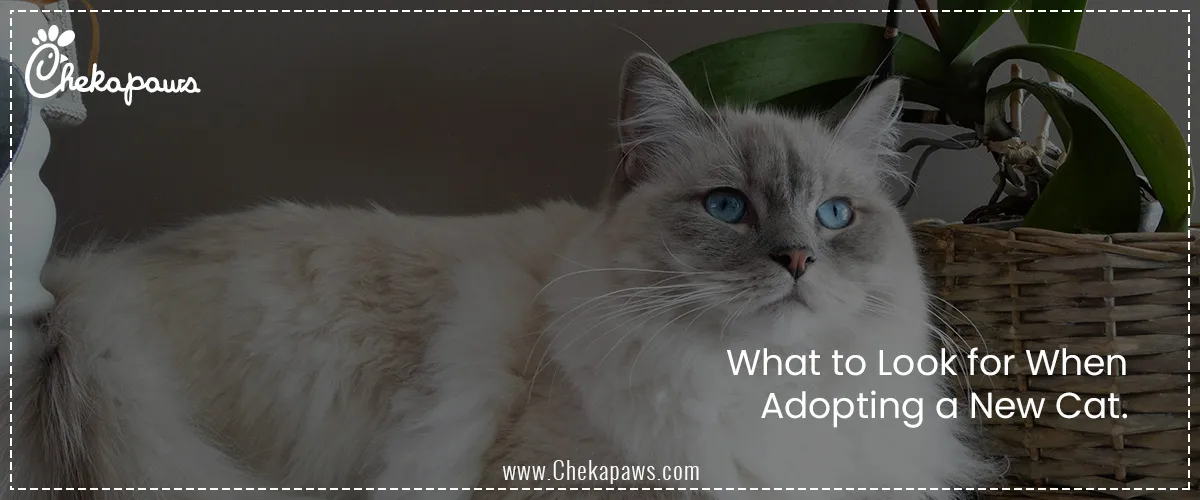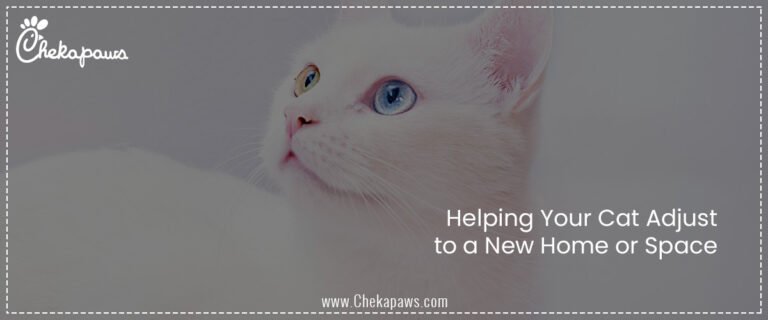We as a pet owners, we ought to consider these factors consideration when adopting a new cat, which is a transforming choice that brings happiness, companionship, and responsibility. Whether you’re adopting a cat for the first time or adding another cat pet to your household, it’s important to know what to look for. With the help of this guide, you will be able to make a smart choice that will benefit both you and your new pet.
Table of Contents

Understanding Your Lifestyle and Expectations
We As a pet owner, before we start looking for a cat, evaluate your lifestyle and your expectations for pet ownership. Think about it:
- Which do you like better, a playful, active cat or a calm, independent one.
- How much of your day can you spend taking care of your cat.
- The majority of the time, are you at home or do you travel.
- Do you have small children or pets in your home.
- Are you allergic to the dander of your pets.
Choosing Between a Kitten or an Adult Cat
- Kittens: Curious, active, and in need of additional socialization and training.
- Adult cats: They may already be litter-trained, have developed personalities, and are typically calmer.
- Senior cats are frequently disregarded, yet they can be wonderful companions because they are typically less energetic and need less care.
A kitten might be a great option for you if you have the patience and time to train it. However, an adult cat can be a better option if you want a more stability.
Breed Considerations
Some purebred cats have unique characteristics and care requirements, but mixed-breed cats are great and adopting a cat is a better option than buying a purebred. Here is a list of popular breeds and their traits in case someone is still interested in a purebred:
- Maine Coon: Affectionate, large, playful.
- Siamese: Vocal, intelligent, social.
- Persian: Low-energy, requires frequent grooming.
- Bengal: Active, loves climbing, requires stimulation.
If you choose on a purebred, be sure it fits your lifestyle by learning about its particular requirements.
Assessing the Cat’s Personality
Every cat has an own personality. Before adopting the cat, spend some time with it.
- Sociable cats that confidently approach you.
- Cats that are shy but curious need patience and a kind approach.
- Cats that are playful and like playing with toys.
- Cats that are calm and calm and like to sit and watch.
Ask about the behavior and personality of the cat from the breeder or shelter.
Evaluating the Cat’s Health
A healthy cat should indicate:
- Eyes that are clear and bright without discharge.
- Ears that are clear of mites and extra wax.
- An neatly groomed coat.
- A healthy weight and an average appetite.
- No excessive sneezing, coughing, or inactivity.
- To make sure the cat is vaccinated, dewormed, and infection-free, ask for veterinary records.
Understanding the Cat’s History
Ask about the cat’s history if you’re adopting from a shelter or rescue:
- Was cats saved, a stray, or a rescue.
- Has the cat experienced trauma, abuse, or neglect in the past.
- Are there any behavioral problems, such anxiety or aggression.
- Understanding the cat’s past helps in getting ready for its adjustment into your house.
Adoption Process: What to Expect
A common adoption procedure is followed by a lot of shelters and rescues, which includes:
- Filling out an application.
- Responding to enquiries regarding where you live and way of life.
- Paying the adoption fee, which frequently covers microchipping, spaying/neutering, and vaccinations.
- However, the majority of shelters require a minimum adoption fee.
- Before completing the adoption, meet the cat and spend some time with it.
- Finding a suitable companion is a top priority for shelters, so exercise patience during the process.
Preparing Your Home for a New Cat
Prepare a secure and cozy space for your cat before bringing them home. Among the necessities are:
- Litter box (located in a quiet environment).
- Bowls for food and water (avoid plastic, as it can trigger allergies).
- Entertainment for the cat in the form of toys and enrichment materials.
- A comfortable place to relax, such as a perch or cat bed.
- Protecting windows, poisonous plants, and small, risky items is known as safety proofing.
Introducing the Cat to Your Home
Give the cat you are introducing complete access to your house after first providing them with a small, peaceful area.
Let the cat get used to things at its own speed.
To encourage interaction, give praise and goodies as positive reward.
Introduce your other pets gradually and under your careful guidance.
Veterinary Care and Long-Term Commitment.
- Adoption needs a continuous effort. Make sure you:
- Make a veterinarian appointment during the first week.
- Continue receiving regular checkups, immunisations, and parasite control.
- A balanced food that is appropriate for the cat’s age and condition should be given.
- Continue engaging in mentally challenging tasks to avoid boredom and behavioural problems.
- Allow your cat to develop a relationship with you over time by being patient and loving.
Conclusion
Adopting a cat may be a fulfilling experience if done carefully. A successful and happy adoption is more likely when personality, health, history, and lifestyle compatibility are taken into account. Make the right decision and relish the friendship that follows since your new feline friend will rely on you for love, care, and a lifetime home.







